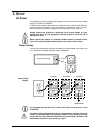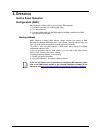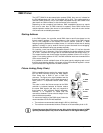
Page 16 of 18 Cubix™ User Manual (Rev. 01a)
DMX Cabling
The DMX protocol requires using special data cables to accommodate for the high
speed digital signals it uses. Despite their apparent similarities, data cables are
electrically different from standard microphone cables because they can carry high
frequency digital signals and have better protection against electromagnetic
interference. You can purchase CHAUVET® certified DMX cables directly from a
dealer/distributor or make your own DMX cable.
If you choose to make your own DMX cable, you must use a data-grade cable such
as the Belden 9841, which has the following electrical characteristics:
Type:
shielded, 2-conductor twisted pair
Maximum capacitance between conductors:
30 pF/ft
Maximum capacitance between conductor and shield:
55 pF/ft
Maximum resistance:
20 ohms/1000 ft
Nominal impedance:
100~140 ohms
DMX Connectors
Each DMX cable must have a male XLR connector on one end and a female XLR
connector on the other end. The DMX protocol indicates that the XLR connectors
must have five pins. However, most lighting fixtures use the 3-pin XLR connector.
The pin assignment of the 3-pin and 5-pin XLR connectors in a DMX cable is as
follows:
Male Plug
Female Plug
Signal
3-Pin
5-Pin
5-Pin
3-Pin
Signal
Common
1
1
1
1
Common
Data -
2
2
2
2
Data -
Data +
3
3
3
3
Data +
Not used
4
4
Not used
Not used
5
5
Not used
You can use the above table to create a 3-pin/3-pin cable, a 5-pin/5-pin cable, or a 3-
pin to 5-pin adapter.
The DMX daisy chain uses a terminator to reduce signal transmission problems,
especially with long cables. The terminator consists of either a 3-pin or 5-pin XLR
male plug with a 120 Ω, ¼ W resistor connected to the wire side of pins 2 and 3, as
shown below.
The terminator plug connects to the DMX Out socket of the last DMX fixture in the
daisy chain.
Do not allow the common wire of the DMX cable to touch the fixture’s chassis
ground. This could cause a ground loop, which may affect your fixtures’
performance. Test all DMX cables with an ohmmeter to verify the correct
polarity of the wires, and to make sure that they are not touching the shield or
each other.


















